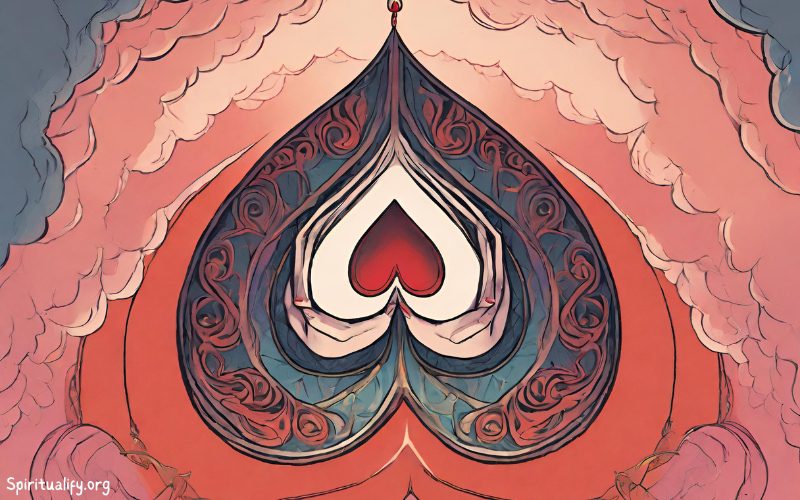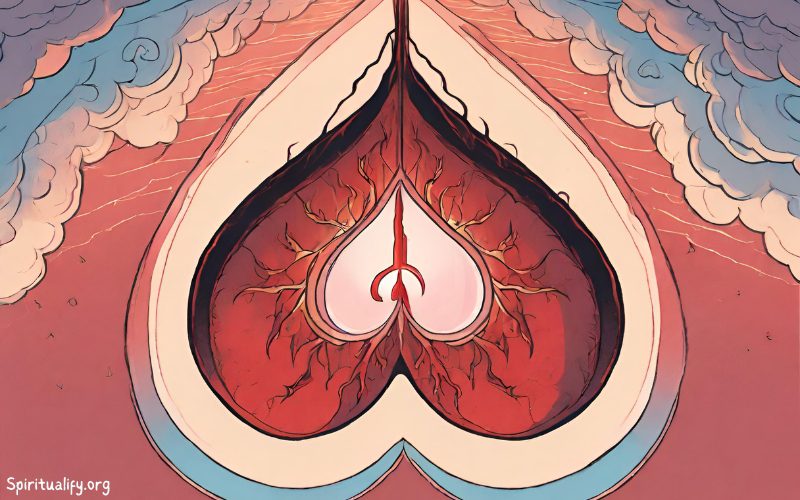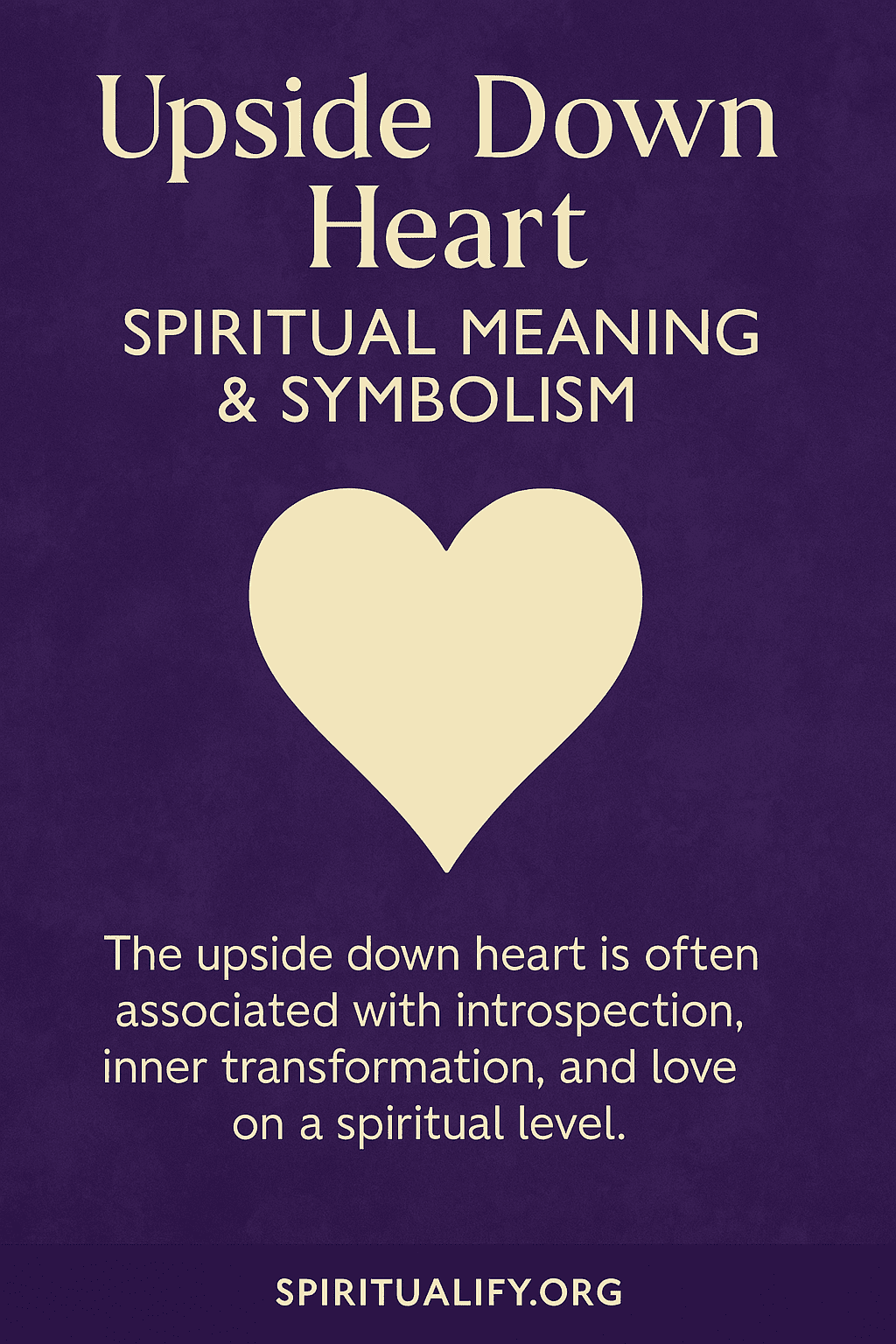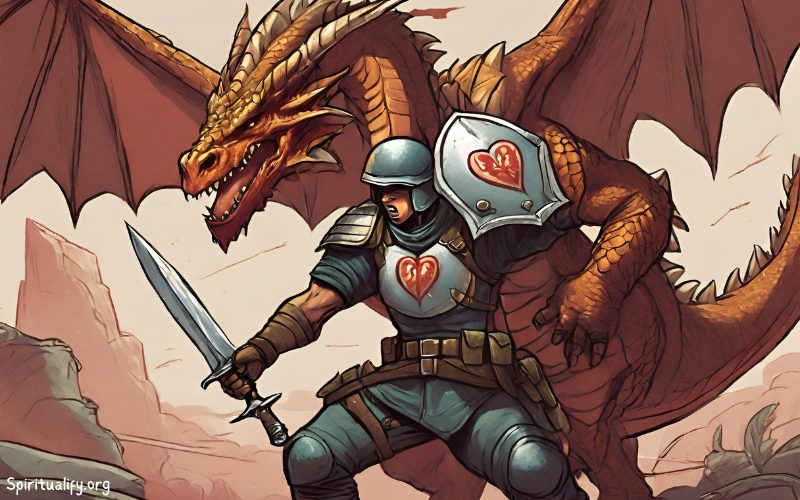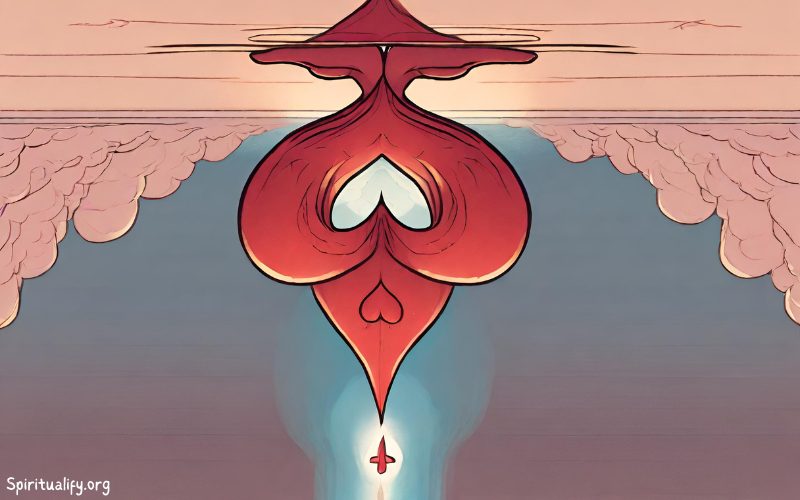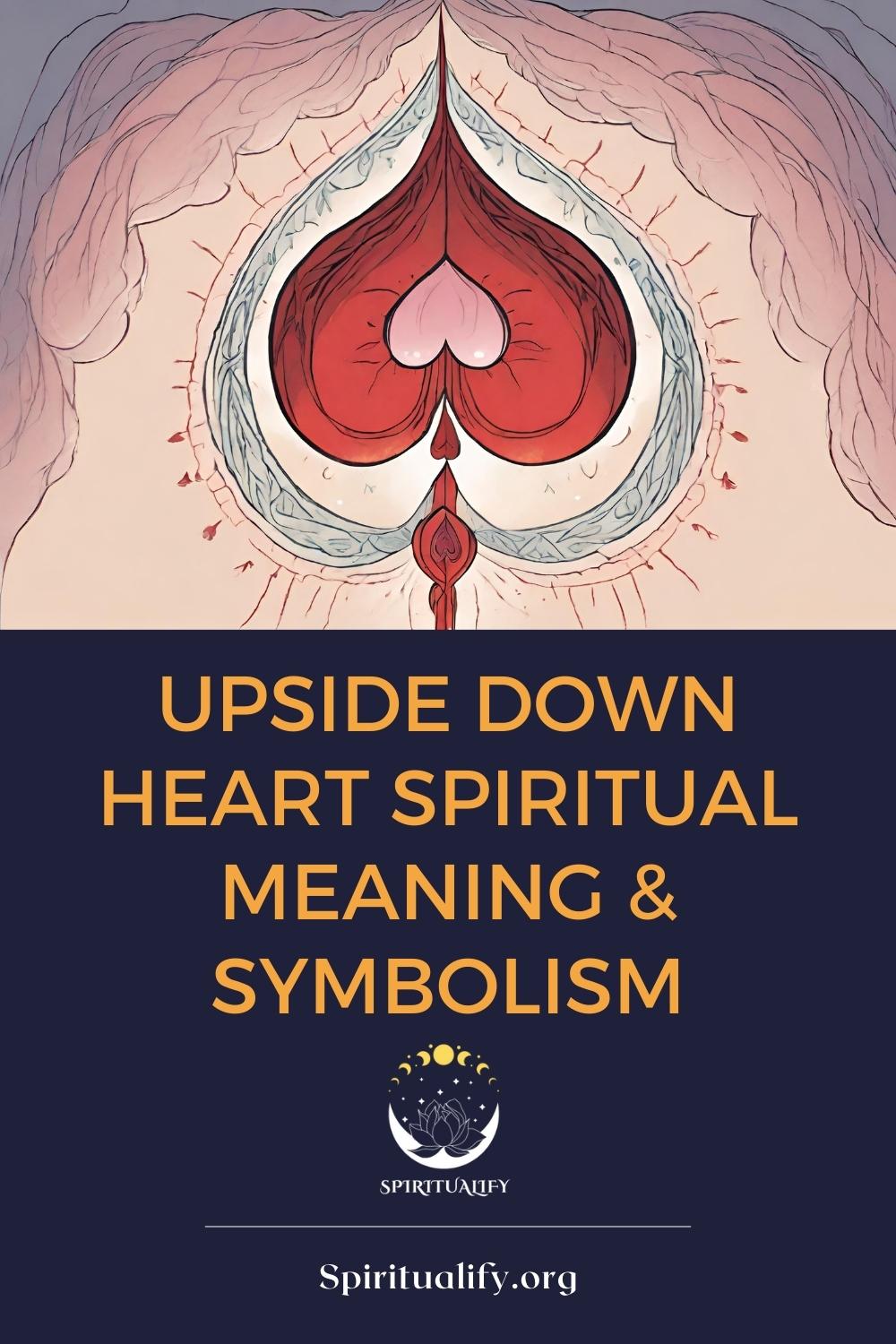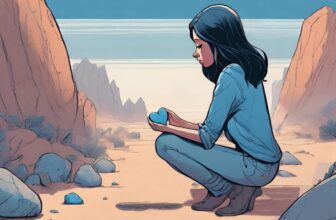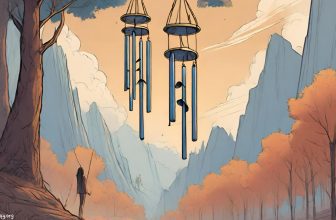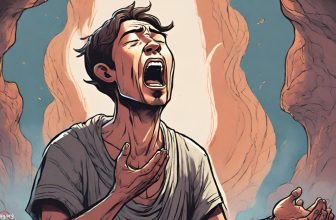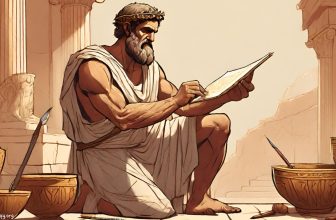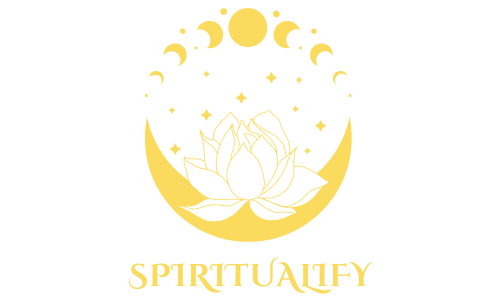Upside Down Heart Spiritual Meaning & Symbolism
Journeying into the world of symbols is akin to embarking on a voyage through a forest of ancient wisdom. Each symbol, unique in its form and function, carries a tale that has been whispered through epochs, and one such emblem that has recently stirred intrigue is the spiritual meaning of upside down heart.
The heart, a timeless representation of love and passion, when turned on its head, emerges as something profoundly distinct, laden with layers of esoteric interpretations.
At first glance, this inversion might seem just an artistic rendition or a quirky design choice. Yet, as with most symbols rooted in antiquity, the depth it encapsulates is vast and multifaceted.
But why the allure? Why would a symbol so universally recognized in its upright form evoke a sense of mystique when merely turned around? This is the realm where the ordinary transforms into the extraordinary, where the simple becomes the profound.
Join us as we delve into this journey, unraveling the layers that lie beneath this enigmatic symbol, and perhaps, uncovering a few secrets of our own existence along the way.
What Does An Upside Down Heart Symbolize?
At first glance, the upside down heart may evoke a sense of disarray, even an unsettling feeling. Such is the power of symbols; their familiar renditions are often etched deep within our psyche.
However, this inversion beckons a more profound reflection. It can be perceived as an overturned vessel, eager to receive the blessings of the cosmos, like a chalice poised in silent anticipation of divine nectar.
In esoteric traditions, the upside down heart epitomizes a reimagining of love and spiritual insight. It's a call to embrace love's multifaceted nature, where passion and serenity, joy and melancholy, coalesce in a harmonious dance.
This symbol whispers of a love that's unshackled from convention, urging us to experience its boundless realms.
Moreover, reminiscent of a leaf's gentle curve, the upside down heart alludes to nature's rhythms, growth, and the cyclical dance of life and decay.
There's an implicit invitation here, a nudge towards aligning with nature, drawing sustenance from its perennial wisdom, and embarking on a journey of self-renewal.
Additionally, its form is reminiscent of a teardrop, a poignant reminder of life's ebbs and flows. It symbolizes the cathartic release of emotions, the purging of pent-up feelings, and the transcendence into a space of clarity and understanding.
Spiritual Meaning Of Upside Down Heart
Embarking on the exploration of symbols, one is often struck by the revelations and nuances that unfold. The heart, universally emblematic of love and connection, is seen anew when inverted. This simple twist unravels a kaleidoscope of meanings, all steeped in layers of mystical significance.
The spiritual meaning of the upside down heart is a tapestry woven with threads of ancient wisdom and contemporary insight. This inverted icon, reminiscent of an upturned chalice, invites energies of receptivity and divine grace.
Unlike the right-side-up heart, which radiates love outwardly, the upside down heart becomes a vessel, a sacred goblet ready to receive the cosmic nectar of enlightenment and connection.
This symbol calls to mind the subtle dance between giving and receiving. The inverted heart, with its contours echoing the anatomy of a leaf or a teardrop, symbolizes life in its most unadulterated form.
It stands testament to growth, metamorphosis, and sometimes, the poignant release of emotions that have been held captive.
Historical narratives, too, are replete with instances where the upside down heart takes on protective roles. Seen as a talisman, it stands guard against malevolent forces, ensuring spiritual equilibrium.
In the esoteric realms of alchemy and secret societies, it quietly transforms from a mere symbol to a crucible, inviting seekers on a quest that transcends the tangible.
Popular Myths and Legends Involving the Upside Down Heart Symbol
The upside down heart, a symbol suffused with mystique, has been an enigmatic presence in folklore and narratives throughout the annals of time. Its inverted form sparks curiosity and conjures a sense of paradoxical unity.
In ancient myths, the upside down heart has often been depicted as a chalice or a cauldron, brimming with the elixir of life. Celtic legends, for instance, speak of magical cauldrons that could bring warriors back to life. Here, the inverted heart symbolizes not just love, but also rejuvenation and cyclical renewal.
Similarly, alchemical traditions have embraced this symbol with fervor. Medieval alchemists, in their quest to transmute base metals into gold, visualized the upside down heart as a crucible of transformation.
For them, it was a representation of the philosopher's stone, a potent and esoteric substance that could catalyze profound metamorphosis.
In Eastern mythology, the upside down heart takes on a more ethereal resonance. It is often likened to the inverted lotus bud, signifying spiritual emergence and enlightenment.
Within this context, the upside down heart becomes a vessel of spiritual awakening, symbolizing the journey from murky waters to radiant bloom.
Contemporary tales too have their share of intrigue involving the inverted heart. In modern fiction and cinema, secret societies and treasure hunters are often depicted deciphering clues that lead to an upside down heart symbol, revealing hidden doors or secret compartments.
In a whimsical twist, some cultures associate the upside down heart with the concept of love that defies gravity and convention. It becomes a symbol of unconventional bonds, untethered by societal norms, and flourishing in its unique orientation.
How Can You Utilize The Power Of An Upside Down Heart In Your Life?
In a world brimming with symbols and metaphors, the upside down heart emerges as an enigmatic emblem, resonating with vibrations that beckon a seeker to delve into its profound depths.
Its distinctive form, reminiscent of a vessel awaiting celestial nectar, is not merely a passive recipient but a dynamic catalyst for inner transformation.
To harness this potent energy, one might begin by weaving this emblem into the fabric of daily contemplation and meditation. Visualize the upside down heart as an amphora, eager to embrace the universal elixir of wisdom and serenity.
In these tranquil moments, a bridge between the ephemeral and the eternal is constructed within your consciousness.
Adorning your personal sanctuaries with symbols, artwork, or even subtle tokens can act as a perennial reminder to embody the openness that this heart signifies.
Whether it is a pendant worn close to your own heart or an artistic rendition gracing your walls, let it serve as an anchor, grounding you in the ethos it represents.
Yet, the power of the upside down heart is not confined to visual representations alone. Engage in practices that resonate with its essence.
Crafting personal rituals or dedicating a moment each day to pen down reflections can metamorphose into a sacred space, echoing the spiritual meaning of the upside down heart.
Finally, embody this symbol in your interactions and relationships. Approach each encounter with a heart ready to receive, akin to the upside down heart’s embracing posture.
By doing so, you create a reciprocal flow of energy, fostering connections that are both nourishing and transcendent.
Last Words
In the tapestry of symbols that have adorned the annals of human thought, the heart stands as a testament to our perpetual quest for understanding and connection.
The spiritual meaning of upside down heart, explored in the depths of this inquiry, unveils a remarkable symphony of layers, each echoing a distinctive resonance that speaks to our innermost selves.
In the realm of spirituality, symbols act as conduits, guiding us through the labyrinth of our existence. The upside down heart, with its subtle inversion, nudges us gently towards a perspective imbued with openness, receptivity, and transformative energies.
This symbol, unassuming at a glance, burgeons into a multifaceted gem under scrutiny, offering insights that are both profound and liberating.
In conclusion, our exploration unearths a rich terrain, teeming with possibilities and paths less trodden.
Through symbols like the upside down heart, we are offered a compass to navigate the often tumultuous seas of our spiritual journey, discovering along the way, a beacon that lights the path to our innermost sanctum.
Having studied energetic healing, counselling, coaching, yoga, and Buddhism, Charles is a teacher of practices that support others to move forward and heal by holistic means.

